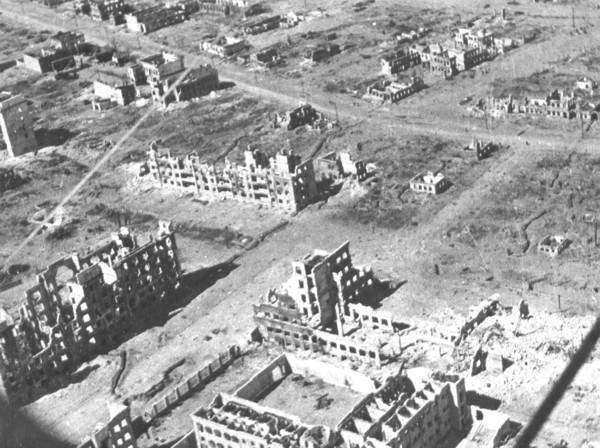 Speaking about the meaning of the Stalingrad Battle in the history of modern Russia, let us remind you that the history of the Soviet Union comes to be the essential part of the history of Russian Federation. Though the Soviet Union has vanished from the political map of the world, the heroic deed of the millions of soviet soldiers, who have freed the world from fascists will never be erased from the blessed memory of their thankful descendants.
Speaking about the meaning of the Stalingrad Battle in the history of modern Russia, let us remind you that the history of the Soviet Union comes to be the essential part of the history of Russian Federation. Though the Soviet Union has vanished from the political map of the world, the heroic deed of the millions of soviet soldiers, who have freed the world from fascists will never be erased from the blessed memory of their thankful descendants.
Russia has always had the cities which played a most significant part in its history. Stalingrad is doubtfully one of those cities. It has become the symbol of pain and suffering, the symbol of the greatest fortitude of the soviet nation.
Stalingrad Battle is one of the supreme battles of the Great Patriotic War of 1941-45, the war of the Soviet Union against Germany and its allies (Hungary, Italy, Romania, Finland). The Great Patriotic War presents itself as the most important part of the World War II. With the constantly growing tension of the forces on the both sides, The Stalingrad Battle lasted 200 days and nights – since July, 17 of 1942 up to February, 2 of 1943.  The Stalingrad Battle can be relatively divided into two periods: the defensive one, starting from the 17th of July up to the 18th of November, 1942, and the offensive one, beginning from the 19th of November, 1942 up to the 2nd of February, 1943.
The Stalingrad Battle can be relatively divided into two periods: the defensive one, starting from the 17th of July up to the 18th of November, 1942, and the offensive one, beginning from the 19th of November, 1942 up to the 2nd of February, 1943.
The news of the beginning of the Stalingrad Battle reached Stalingrad just like all the other cities on the 22nd of July, 1942. By the evening of the same day all the military enlistment offices were overcrowded with volunteers, willing to head off for the defense of their homeland.
From the very outset of the war the military forces of the USSR were combined of the Red Army (land forces), air forces and naval forces. By the same time, Germany had all the modern military forces – Verrmaht, which had gained the battle-tried experience while capturing the countries of the Eastern Europe and included land, air and naval forces.
Since the very first days of the war Stalingrad turned into one of the largest arsenals in the south-west of the country. The plants and the factories of the city were occupied with the production and maintenance of tanks, artillery guns, mortars, watercrafts, submachine guns and other armaments.
 Several militia units were formed in Stalingrad. The city turned into a sizable hospital center.
Several militia units were formed in Stalingrad. The city turned into a sizable hospital center.
The Stalingrad Defense Committee, which played an important role in the coordination of the actions of the civil and military officials, was founded.
The plans of the German command for the summer of 1942 had the aim of destroying soviet armies in the south of the country, taking over the oil regions of Caucasus, agricultural regions of Don and Kuban, interrupting the communication between the center of the country and the Caucasus, and forming the conditions for the victorious ending of the war. The key operation was laid out into three stages consisting of a number of separate but supplementing and interconnected advances. The responsibility for the performance of this operation was imposed on the groups of “A” and “B” armies, combined of 5 fully armed German armies. These armies included more than 900 thousand soldiers, 17 thousand armors, 1,2 thousand tanks, supported by 1640 airplanes of the 4th Air Fleet.
[1]
[2]
[3]
[4]
[5]